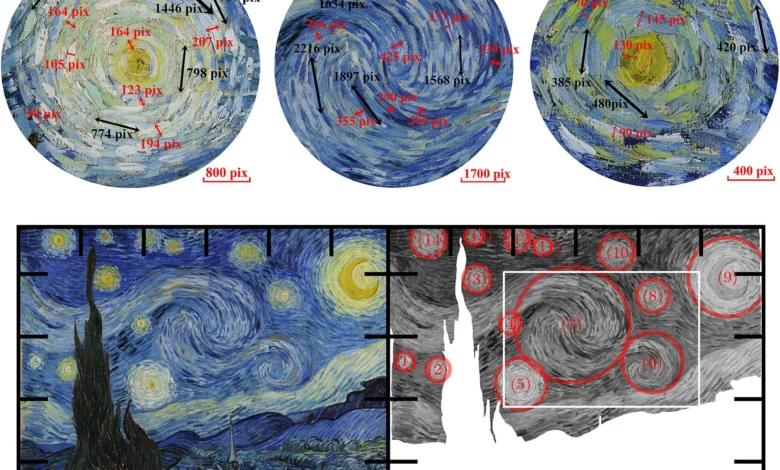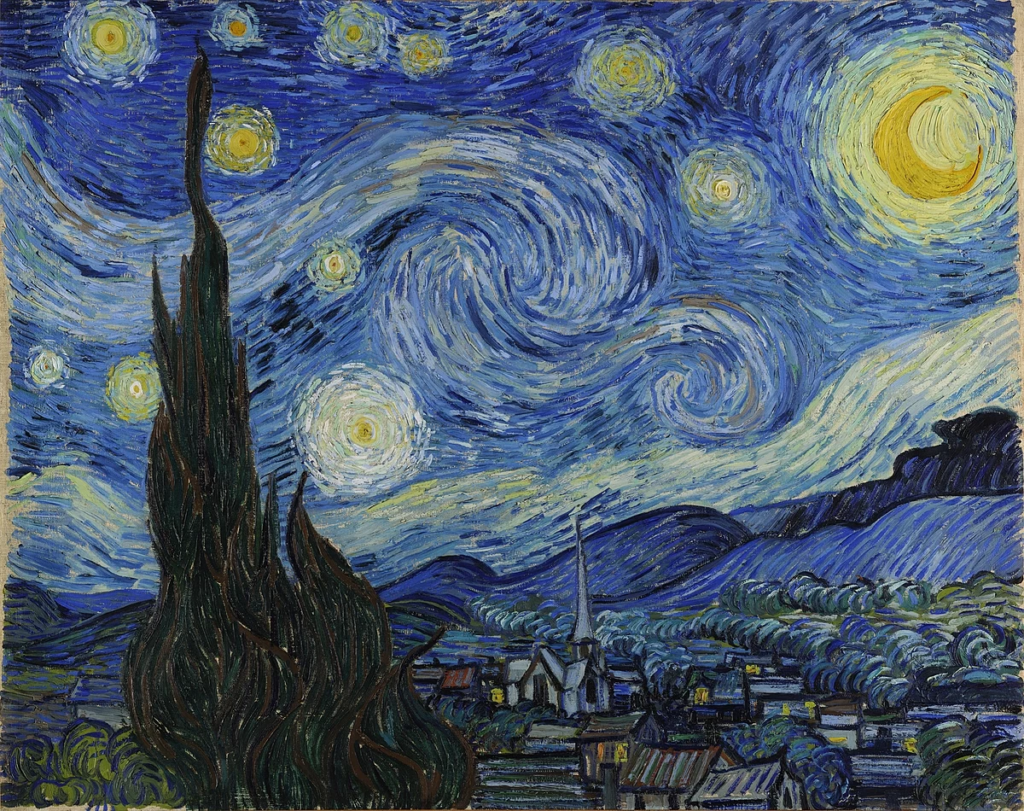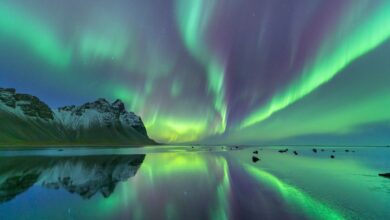The science behind the swirling sky from Van Gogh’s “Starry Night” painting
Scientists studied a version of the artwork to analyze the sizes of the brushstrokes and compare them to theoretical predictions.

Vincent van Goghs famous painting The Starry Night is not only admired, for its beauty and cultural impact but also for its connection to the laws of physics. Scientists have recently uncovered a surprising relationship between artwork and natural phenomena. A study conducted by researchers in France reveals that Van Gogh’s depiction of the sky features patterns resembling turbulence found in nature.
Painted during Van Gogh’s time in an asylum at Saint Remy de Provence The Starry Night showcases a vibrant and swirling sky filled with stars and a prominent moon. On the left side cypress trees dominate the foreground while a peaceful village sits in the bottom right corner. While the painting has long been cherished for its aesthetic appeal and symbolism scholars have now discovered that the chaotic swirls in the sky closely align with scientific principles.

How Van Gogh Captured Natural Turbulence in Starry Night
Research suggests that the swirling patterns in Van Goghs night sky painting follow Kolmogorov’s turbulence law. This principle predicts how fluids and atmospheric phenomena behave by examining energy, which indicates how energy spreads out. Scientists studied a version of the artwork to analyze the sizes of the brushstrokes and compare them to theoretical predictions.
Yongxiang Huang, a co-author of the research from the State Key Laboratory of Marine Environmental Science at Xiamen University in China, explained that Van Goghs careful use of swirling brushstrokes shows an understanding of dynamics. Huang noted that Van Gogh’s art reveals a deep and intuitive grasp, of the forces at play likely influenced by his observations of cloud and atmospheric movements.
Recent studies on the shimmering star-like reflections in Van Goghs The Starry Night have uncovered a fascinating link. These reflections align with Batchelor’s scaling law a scientific concept that explains how turbulence varies before energy spreads out. This discovery suggests that Van Gogh’s depiction of the sky was not only an artistic choice but also a scientifically accurate representation.
Researchers pointed out that Van Gogh skillfully captured the size of the swirling patterns in the sky their distances and intensities mirroring observed natural turbulence. Huang and his team noted Van Goghs keen perception of these flows allowing him to replicate them with precision.
You might also be interested in – PhysicsWallah CEO takes NEET exam controversy to Supreme Court over grace marks for 1,500 students



